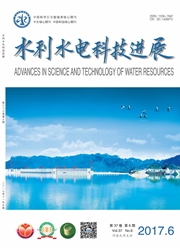

 中文摘要:
中文摘要:
为给河口海岸防护工程设计和地形演变预测提供科学依据,研究了波浪从外海向近岸传播过程中在一定地形条件下产生的布拉格共振现象.介绍了波浪布拉格共振的定义、特征和研究意义,评述了现场观测、理论研究、水槽试验、数值模拟等4 种研究方法的优缺点,总结了波浪布拉格共振类型、低阶共振反射系数公式和高阶共振数值模拟的研究成果,提出了波浪布拉格共振主频下移、不规则波布拉格共振特性、波流相互作用下布拉格共振机理等3 个亟待深入研究的课题.
 英文摘要:
英文摘要:
Bragg resonance phenomena, occurring as waves propagating from the sea to shallow water under particular topographic conditions, were studied to provide a scientific basis for the design of estuarine and coastal protection engineering and the forecast of morphodynamic evolution. The definition and characteristics of wave Bragg resonance as well as the significance of research are introduced, and the pros and cons of four approaches for study of the phenomena are reviewed, including field observation, theoretical analysis, numerical simulation, and experimental investigation. Major achievements regarding the types of wave Bragg resonance, the formulas of the low-order resonance reflection coefficient, and high-order resonance numerical simulation are summarized. Three important topics for further intensive study are proposed, including the negative drift of dominant frequency, the characteristics of the irregular wave Bragg resonance, and the generation mechanism of Bragg resonance under wave-current interactions.
 同期刊论文项目
同期刊论文项目
 同项目期刊论文
同项目期刊论文
 期刊信息
期刊信息
